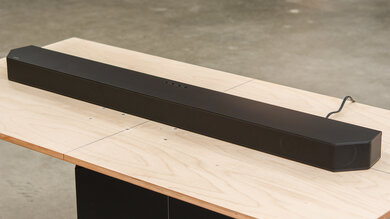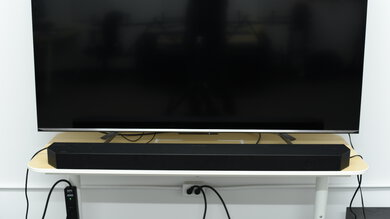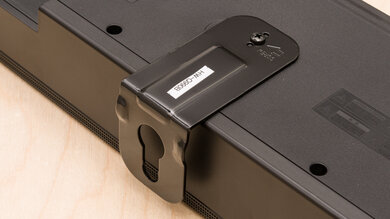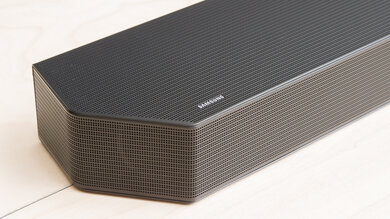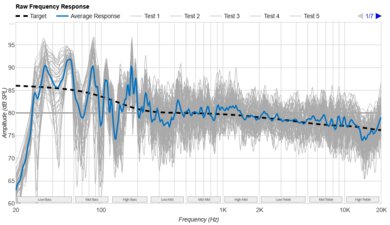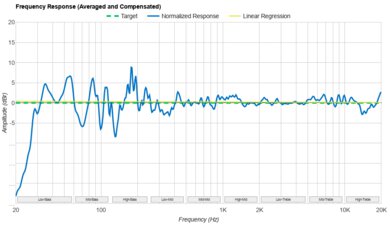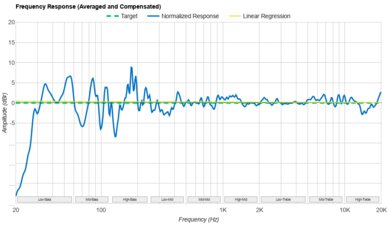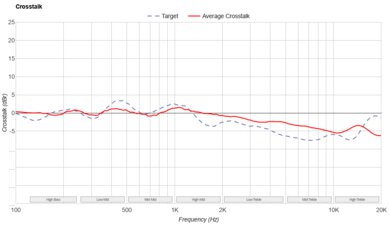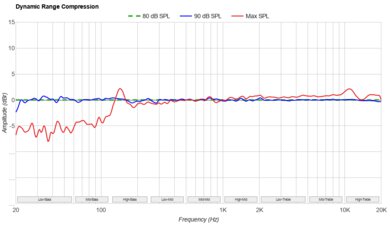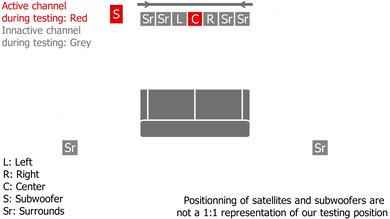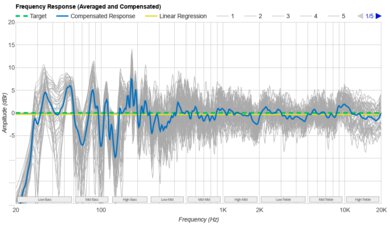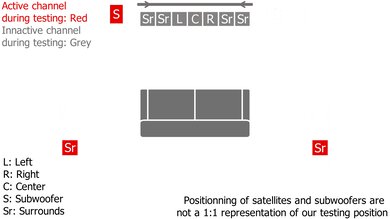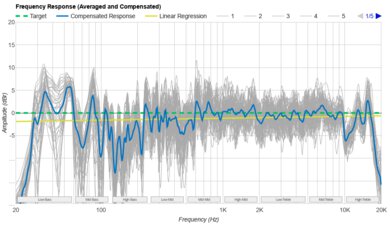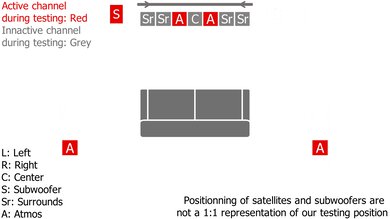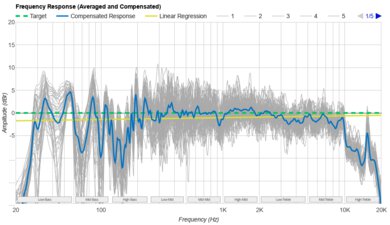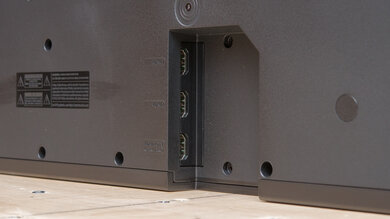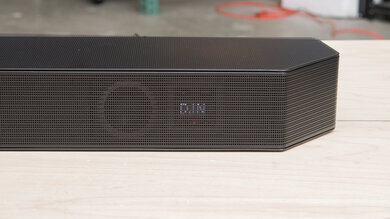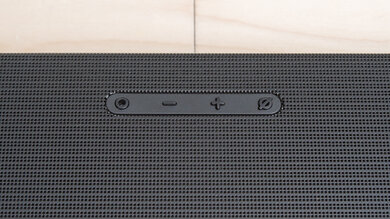The Sonos Beam Gen 2 is a 5.0 setup that's the upgraded version of the Sonos Beam. It keeps the same compact design as its predecessor, but it adds Dolby Atmos support so you can enjoy movies and other height content on your favorite streaming platforms. It's a Wi-Fi-enabled soundbar that you can control using either Amazon Alexa or Google Assistant, and its compatibility with the Sonos S2 app makes it easy to integrate into your existing Sonos ecosystem. Also, you can add on a separate subwoofer and satellites from the manufacturer if you wish to improve its performance.
Our Verdict
The Sonos Beam Gen 2 is decent for mixed usage. This 5.0 setup offers a small, standalone design that's ideal for a smaller living space. Out-of-the-box, it reproduces dialogue in movies and TV shows with clarity, and vocals and lead instruments in your favorite music are present and detailed in the mix. Of course, since it's a standalone bar, you don't get as much rumble in the low bass during action-packed scenes, and the lack of satellites takes away from the immersive feel with surround sound. However, you can always add these components separately if you want to improve the performance.
- Bass and treble adjustments.
- Room correction feature (iOS only).
- Dolby Atmos support.
- Lacks low bass.
- Doesn't get very loud.
- No graphic EQ.
The Sonos Beam Gen 2 is good for dialogue-centric TV shows and podcasts. It's a 5.0 soundbar, so it has a discrete center channel to improve vocal clarity in the mix. Its balanced sound, especially in the mids, ensures that dialogue reproduces with accuracy and clarity, and you can always use its dialogue enhancement tool to make voices more crisp. That said, when it comes to podcasts and audiobooks, you're limited to Wi-Fi if you want to stream wirelessly from your mobile devices, as there's no Bluetooth support.
- Room correction feature (iOS only).
- Dialogue enhancement feature.
- Doesn't get very loud.
The Sonos Beam Gen 2 is good for music. As with most premium bars on the market, there's a room correction tool to optimize its sound based on your room's unique acoustics—Sonos calls it Trueplay. It's only available with iOS devices, but if you're an Android user, you can still use its bass and treble adjustments to accommodate for any changes in the sound with a different room. Overall, its sound profile is suitable for listening to lots of different music genres, with clear and detailed voices and lead instruments and a little extra punch in the high bass. EDM and hip-hop fans will notice the lack of rumble in the low bass.
- Bass and treble adjustments.
- Room correction feature (iOS only).
- Lacks low bass.
- Doesn't get very loud.
The Sonos Beam Gen 2 is decent for movies. This 5.0 setup supports lots of different audio formats, which you'll likely come across on different streaming platforms and Blu-rays. Despite its small size, it provides a wide soundstage that stretches sound into the space around your room. However, it doesn't perform as well as setups with rear satellites, and that's especially noticeable with Atmos and Dolby Digital content. Plus, the lack of a sub means your couch doesn't shake during action-heavy scenes like at a movie theater.
- Bass and treble adjustments.
- Room correction feature (iOS only).
- Lacks low bass.
- Doesn't get very loud.
Changelog
-
Updated May 12, 2025:
We've updated the Stereo Frequency Response box to mention user reports of a metallic, distorted sound audible when playing back surround or Dolby Atmos content over an HDMI connection.
-
Updated Nov 21, 2024:
We've updated the Sound Enhancement Features box to add a comparison with the Samsung HW-S60D.
-
Updated Nov 05, 2024:
The Compared To Other Soundbars box has been updated to mention the Bose Smart Soundbar.
- Updated Oct 01, 2024: This review's
Check Price
Differences Between Sizes And Variants
This soundbar is available in 'Black' and 'White' color variants. We expect both variants to perform similarly. We tested the 'Black' version, and you can see the label for the model we tested here.
Let us know in the forums if you come across another version of this soundbar.
Popular Soundbar Comparisons
The Sonos Beam Gen 2 is a 5.0 setup that's the upgraded version of the 3.0 Sonos Beam. Despite its small size, it has a wide, immersive-sounding soundstage that rivals home theater tower speakers. Unlike its predecessor, it also supports Dolby Atmos content. If you're looking at competing brands, the Bose Smart Soundbar is another small all-in-one option that has a slightly better surround and Atmos performance, but its stereo soundstage isn't as big.
See our recommendations for the best small soundbars, the best Dolby Atmos soundbars, and the best soundbars under $500.
The Sonos Arc Ultra is a better soundbar than the Sonos Beam (Gen 2) in most respects. While both Sonos bars can connect with compatible Sonos speakers to expand the setup to a surround setup, the 5.1.2-channel Arc Ultra, by default, has an integrated sub and two up-firing drivers over the 5.0-channel Beam (Gen 2). The Arc Ultra also typically gets a bit louder than the Beam (Gen 2) in most scenarios. That said, the Beam (Gen 2) is significantly cheaper and supports optical inputs, making it the better option for setups with an older AVR or TV.
The Sonos Arc is better for mixed usage than the Sonos Beam (Gen 2). The Arc is a 5.0.2 setup with a better Atmos performance. It also gets louder, albeit with more compression at max volume. However, the Beam is more compact and better built. You can also upgrade both setups with a subwoofer and satellites.
Whether you should choose the Sonos Beam (Gen 2) or the Bose Smart Soundbar depends on your primary usage and if you already own Sonos or Bose products to integrate under one app. The Sonos has a bigger stereo soundstage and works better for TV shows and music with a slightly better audio format support that includes DTS. Meanwhile, you may prefer the Bose for its better Dolby Atmos and surround sound and less compressed sound at high volumes.
The Sonos Beam (Gen 2) is better than the Sonos Ray. The Beam is a 5.0 setup with better soundstage and surround performances, and unlike the Ray, it has Dolby Atmos support. It has a more extended low-bass, so you feel more rumble in the mix. There's HDMI connectivity and built-in voice assistant support, which the Ray lacks. However, the Ray is a more affordable option, and it's still a pretty decent choice for vocal-centric TV shows and music.
Test Results



